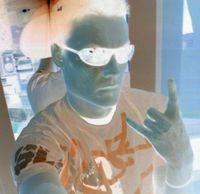
F-Theory
F-theory is a branch of string theory developed by Cumrun Vafa. The new vacua described as F-theory were discovered by Vafa, and it also allowed string theorists to construct new realistic vacua — in the form of F-theory compactified on elliptically fibered Calabi-Yau four-folds. The letter "F" supposedly stands for "Father".
F-theory is formally a 12-dimensional theory, but the only way to obtain an acceptable background is to compactify this theory on a two-torus. By doing so, one obtains type IIB superstring theory in 10 dimensions. The SL(2,Z) S-duality symmetry of the resulting type IIB string theory is manifest because it arises as the group of large diffeomorphisms of the two-dimensional torus.
More generally, one can compactify F-theory on an elliptically fibered manifold (elliptic fibration), i.e. a fiber bundle whose fiber is a two-dimensional torus (also called an elliptic curve). For example, a subclass of the K3 manifolds is elliptically fibered, and F-theory on a K3 manifold is dual to heterotic string theory on a two-torus. (Eight dimensions are large.)
The well-known large number of semirealistic solutions to string theory referred to as the string theory landscape, with 10500 elements or so, is dominated by F-theory compactifications on Calabi-Yau four-folds.




